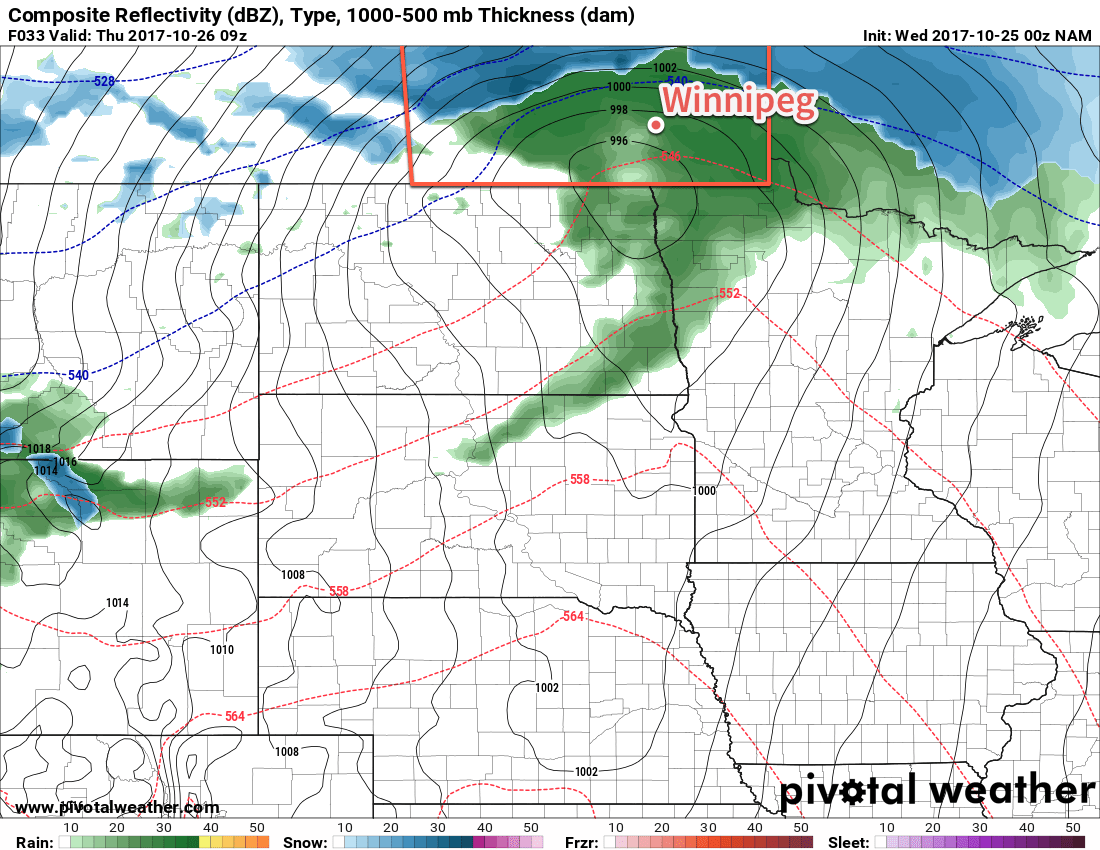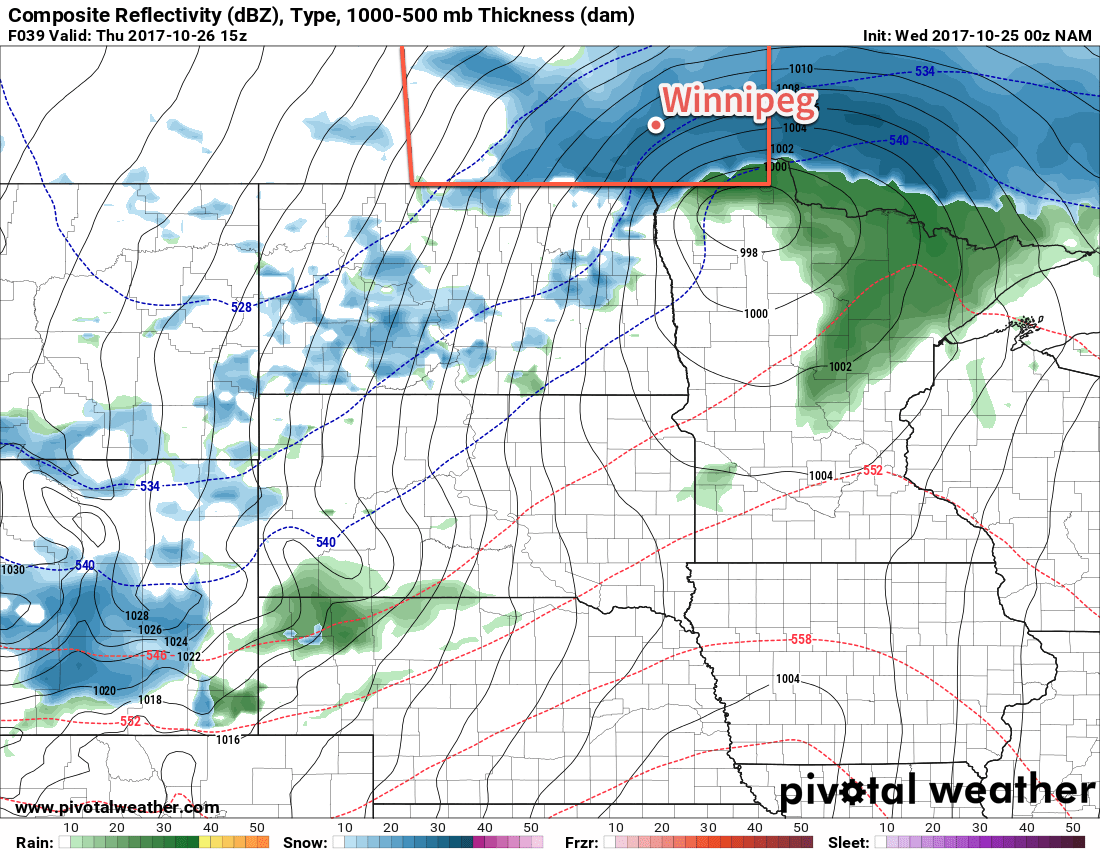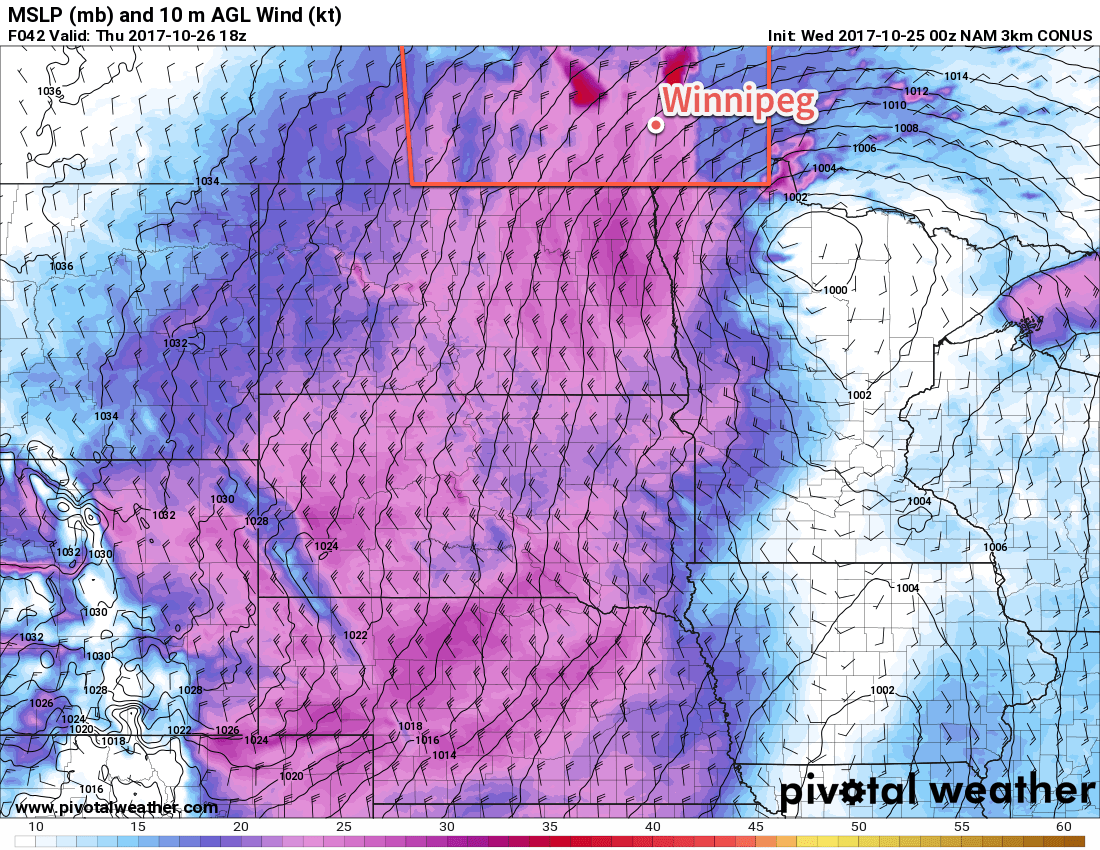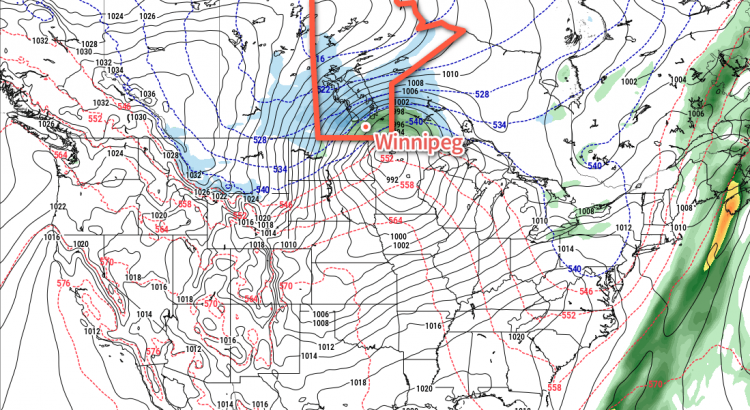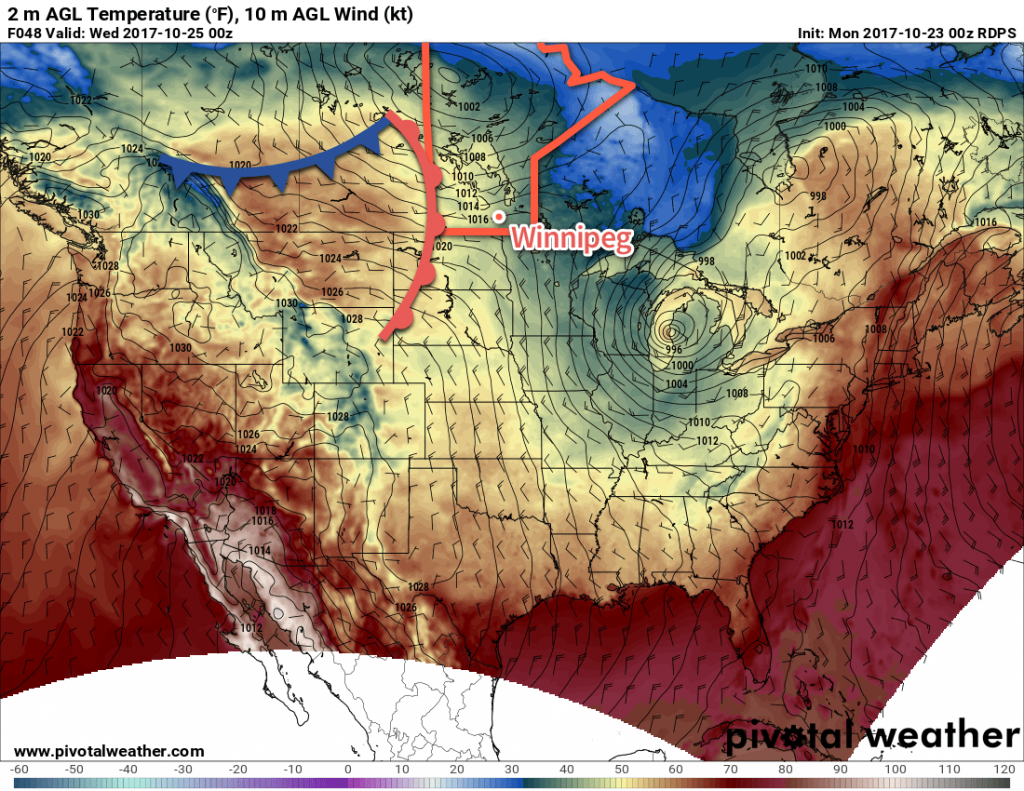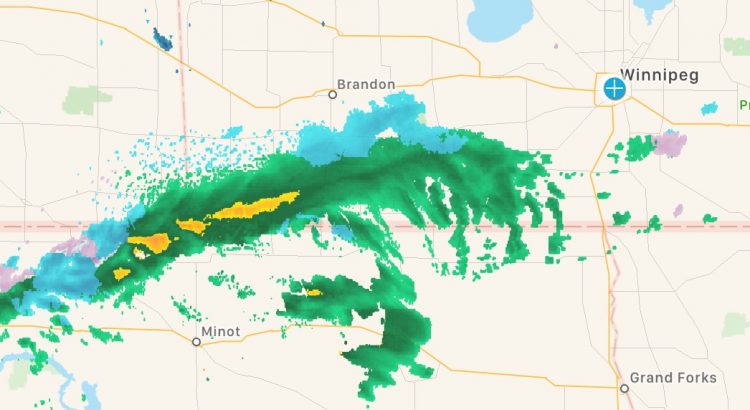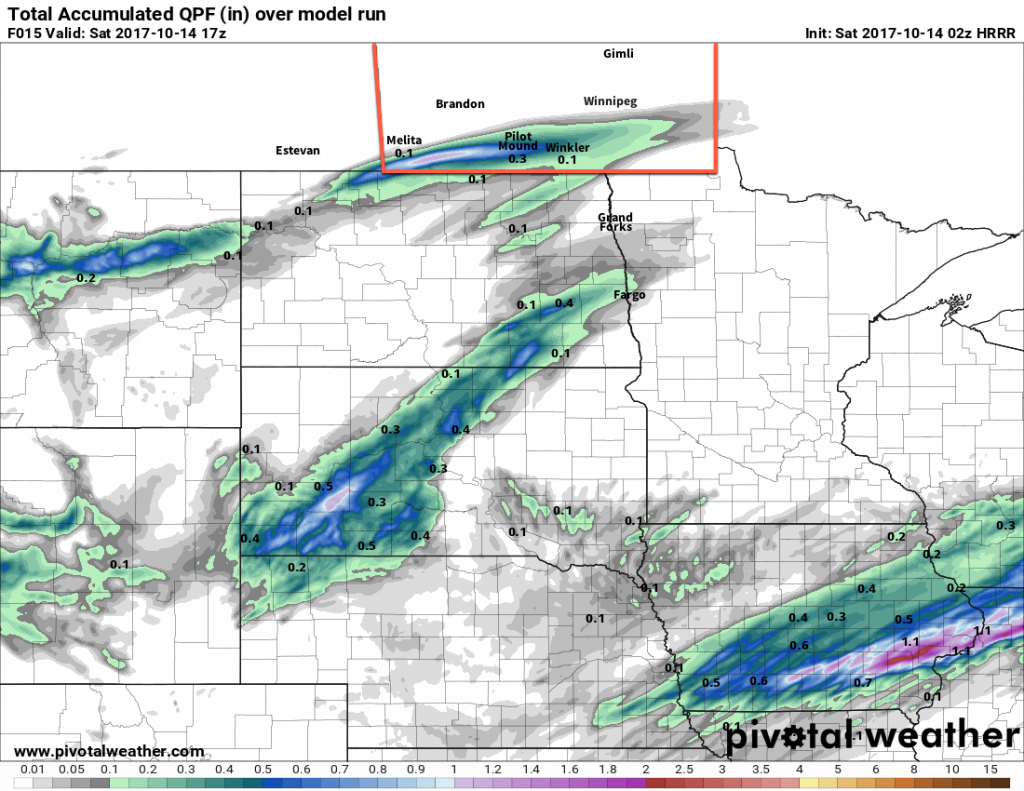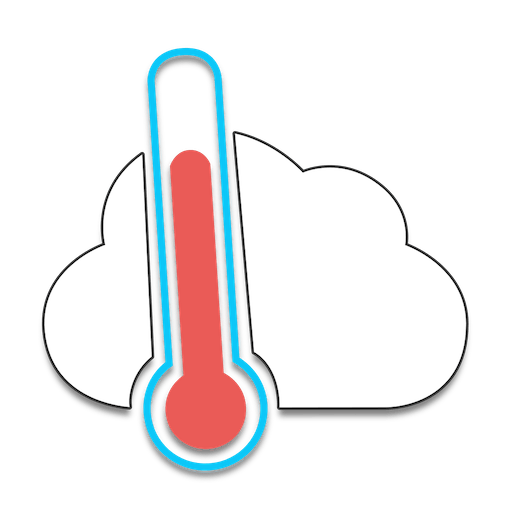Winnipeg will be offered a reprieve from yesterday’s snow and harsh wind as with temperatures set to rebound towards seasonal values over the next couple days. The region will see increasing cloud through the weekend, though, as another low pressure system will bring some light snow and rain to the province Saturday night into Sunday.
The sun will be back today in WInnipeg as a ridge of high pressure building southwards clears out the remaining clouds from yesterday’s storm system. Temperatures will slowly climb back above freezing or a high near +2°C this afternoon. While that’s a bit below-seasonal, the absence of any wind will be a welcome change. Skies will remain clear tonight, but the ridge of high pressure in place will send temperatures well below-seasonal tonight with lows of -6 to -10°C through the Red River Valley and southern Interlake.
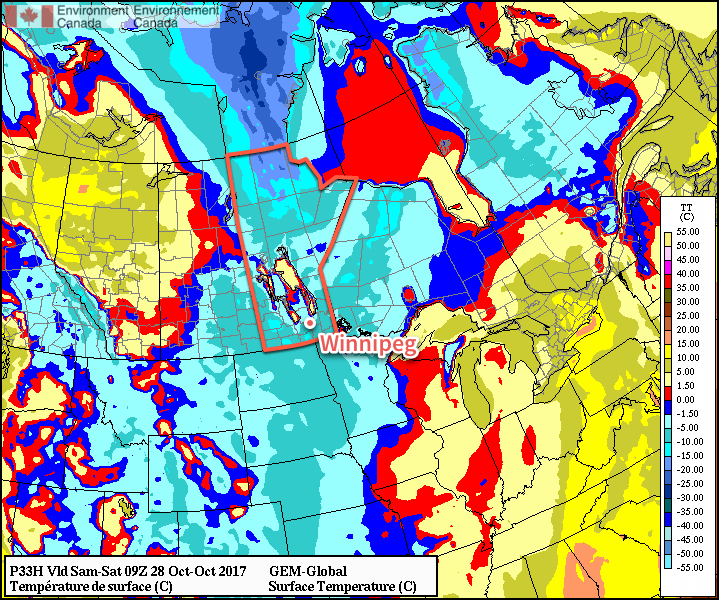
Saturday will see seasonably cool conditions in Winnipeg for the last Blue Bomber’s regular season home game. Winnipeg will see a mix of sun and cloud as warmer air spreads eastwards across the Prairies ahead of a low pressure system sliding southeastwards from Yellowknife, NWT. Temperatures will reach a high near 3°C with light winds.
Skies will cloud over late in the afternoon or early Saturday evening with a mix of snow and rain moving into the Red River Valley from the north. As the evening progresses there will be a continued chance for showers.1 Temperatures will dip to a low near +1°C with winds increasing out of the south to 20-30 km/h.
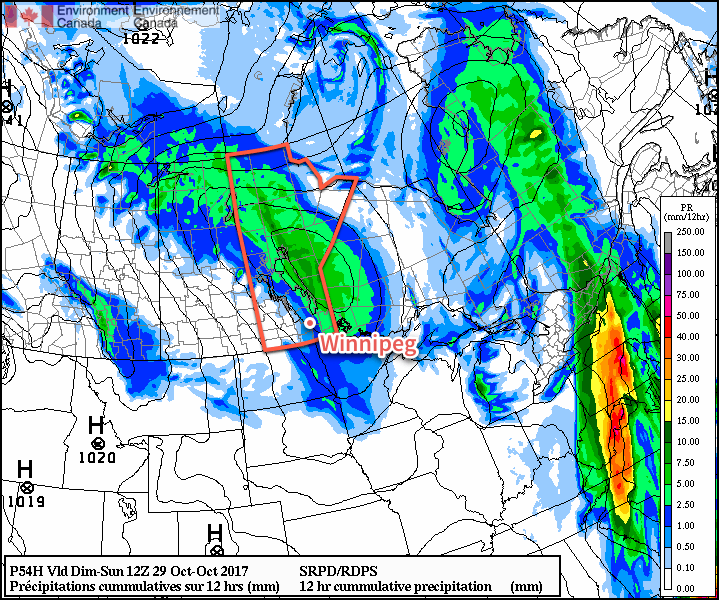
Sunday will start with a cold front swinging through the Red River Valley, bringing with it some morning showers and shifting winds to the northwest at 30-40 km/h. There will be a slight chance of showers through the remainder of the day after the cold front passes, but it appears much of the precipitation associated with this system will remain further north and east of Winnipeg, along a the track of the low moving through the province: from Swan River southeastwards through the central Interlake and into southeastern Manitoba. Temperatures will reach a high near 6°C.
Sunday night will continue to be overcast with an increasing chance of rain changing to snow through the night as the precipitation that is north of the Red River Valley slumps southwards. Temperatures will dip to a low near -1°C with winds remaining out of the north at 30-40 km/h.
Long Range Outlook
Monday will likely bring some morning snow giving way to cloudy skies and a high near freezing with breezy north winds continuing. It looks quite likely that lake-effect snow will develop off of Lake Manitoba and Lake Winnipeg, potentially bringing accumulating snow to the regular places: near Portage la Prairie and southwards along the western escarpment, and south of Lake Winnipeg towards Beausejour. Of course, exactly where sees these bands of snow will depend significantly on the exact wind direction, so it’s a bit early to say much of whether or not Winnipeg will be impacted.
The remainder of the week looks cool and will bring several chances for flurries as multiple disturbances move through.
Winnipeg’s seasonal daytime high is currently 6°C while the seasonal overnight low is -4°C.
- Snow will only be likely in the early evening; increasing amounts of warm air aloft combined with surface temperatures above zero should provide enough warmth to favour rain. ↩
